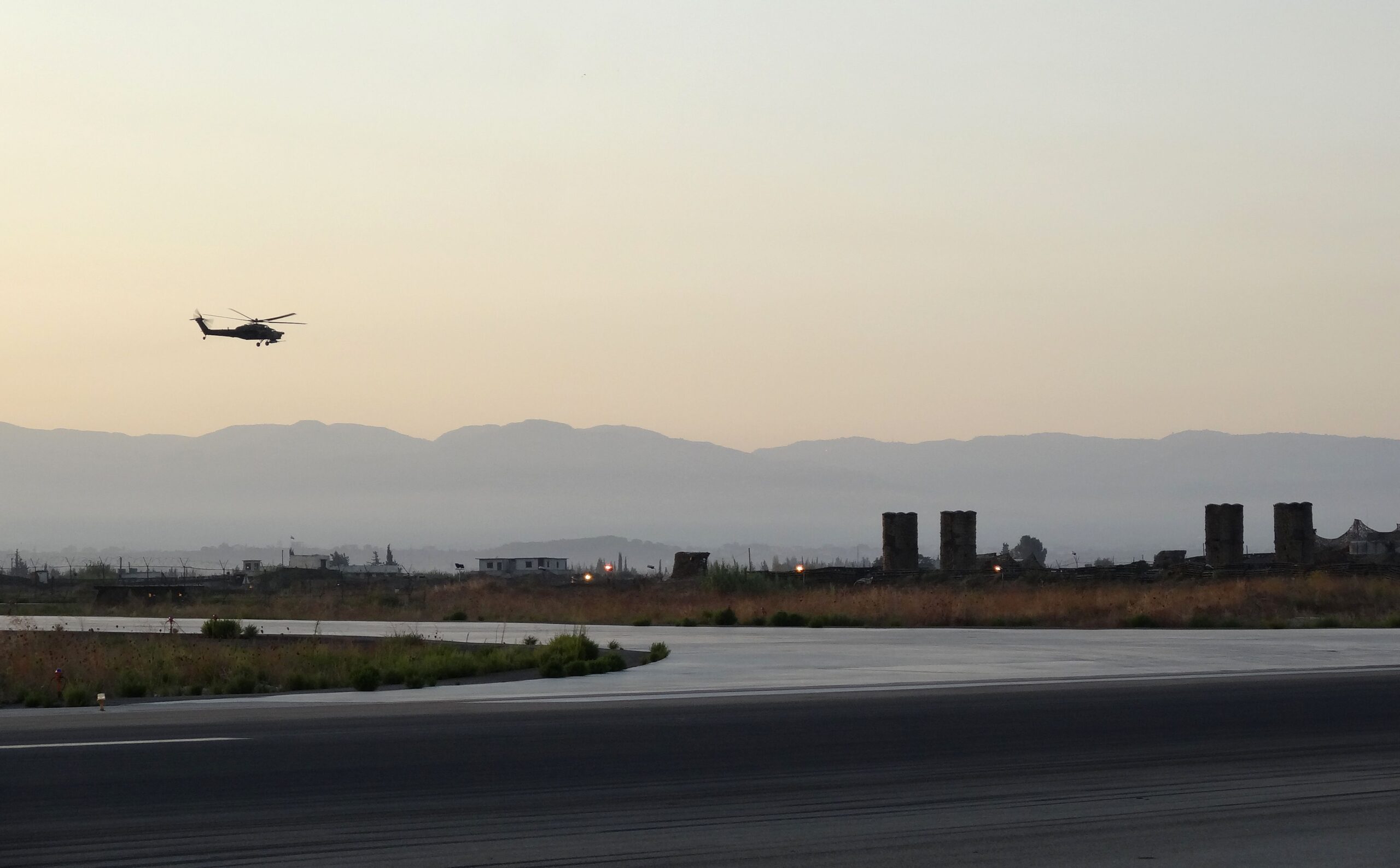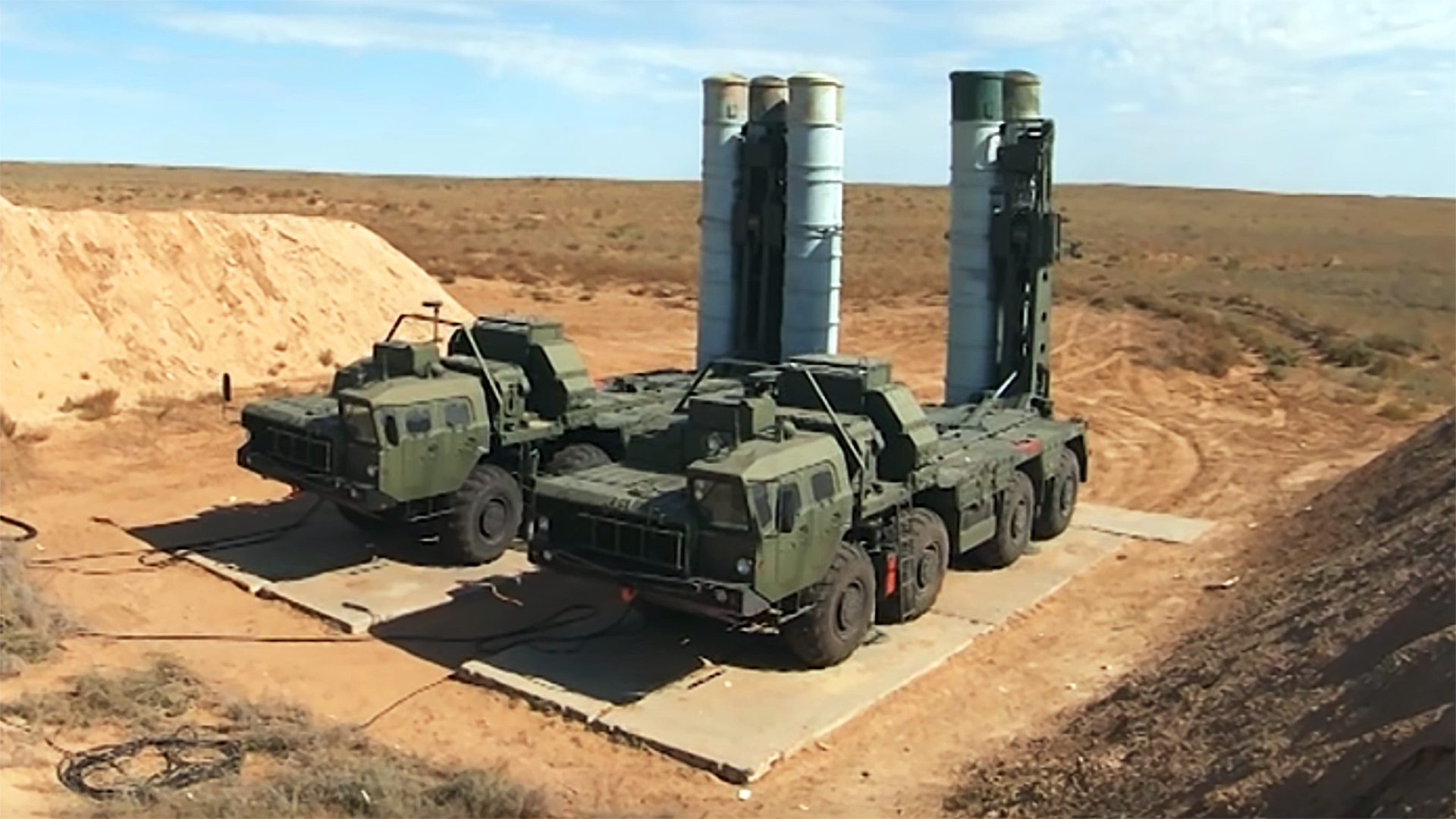Satellite imagery confirmed Russia redeployed an S-300 surface-to-air missile (SAM) system from Syria, and observers believe the battery is already in transit through the Black Sea to support Russia’s war in Ukraine.
This battery, in particular, arrived in 2018 and was something of a gift to Syrian strongman Bashar Al Assad. It was declared a much-needed upgrade of Syria’s ancient, and in some cases dangerous, air defense system. It was not located at Russia’s airbase south of Latakia or its prized naval port in Tartus, multiple advanced air defense systems remain at these locations protecting Russian interests. Instead, it sat inland and was supposed to protect critical Syrian targets. While it was claimed to be a Syrian system, in the years that have passed, it became clear that Russia retained control of it. Now Moscow appears to have taken its ‘gift’ back and shipped it off to the Black Sea.

Private intelligence firm ImageSat Intl. released imagery showing the battery’s now-empty garrison near Masyaf, Syria, on Friday. Accompanying imagery caught the battery’s vehicles lined up neatly in Tartus at Russia’s naval base, with the cargo ship Sparta II waiting across the harbor.
The Sparta II didn’t stay in Tartus long, as H I Sutton (@CovertShores ) noted for navalnews.com. The U.S.-sanctioned vessel, a known carrier for Russian military equipment, passed through the Bosporus under cover of darkness into the Black Sea on August 24, with well-known ship spotter Yörük Işık (@YorukIsik ) posting video from the transit. Satellite tracking showed the ship nearing Novorossiysk, a major Russian Navy Black Sea Fleet base less than 100 miles from the Kerch Strait and Crimea, before arriving Saturday.
Turkey closed the Turkish Straits to warships, pursuant to the 1936 Montreaux Convention, in the war’s early days. It’s not clear how Sparta II’s transit, with Russian military hardware likely onboard, fits into the decidedly complicated diplomacy of Russia, Ukraine, Turkey, and NATO. The nighttime passage may well be by design to avoid the optics of Russian weapons freely moving toward the frontline.
The Masyaf S-300 battery, believed to be an advanced S-300PMU-2 (NATO Designation: SA-20B Gargoyle), reportedly fired at Israeli Air Force fighters during Israeli airstrikes on May 13. Israel later downplayed the incident as a “one-off” and that the missiles were fired after Israeli jets had left the area, potentially more bluster than actual engagement.
Russia deployed the SAMs in 2018 after aging Syrian SA-5 (S-200) SAM shot down a Russian Il-20 Coot surveillance plane over the Eastern Mediterranean during an Israeli raid on Latakia, killing all onboard.
We wrote about those Russian claims and their myriad problems, as well as how the S-300s wouldn’t keep Israel from striking Syrian targets, not long after.

If four years of continued raids on Syrian territory wasn’t enough, Tel Aviv hammered the point home this week. Huge explosions rocked a reported Syrian Scientific Studies and Research Center (SSRC) facility near Masyaf on August 25. The base, with reports claiming it was either an ammunition depot or medium-range ballistic missile production facility, went up in smoke and burned through the night. Syrian air defenses, with shortcomings similar to what brought Russian S-300s in 2018, also made an appearance.
Where the battery from Masyaf goes in Russia is anybody’s guess, though somewhere near the Ukrainian frontline, Crimea, or near Russia’s border with Ukraine, makes the most sense. Russian air defenses have been notoriously ineffective in stopping some types of Ukrainian attacks, particularly from drones, in Crimea, in Russia itself, and even on the forward battlefield. But when it comes to aircraft, they have made a major impact on Ukraine’s ability to push its limited fixed-wing and rotary-wing air combat power toward the front lines. This reality has been underscored by Ukrainian fighter pilots’ own testimony.
There’s also the recent revelation that Ukrainian MiG-29s are carrying AGM-88 HARM anti-radiation missiles, a significant upgrade to Ukraine’s efforts at suppressing and destroying enemy air defenses. Russia also appears unable to intercept M31 GMLRS rockets, Ukrainian HIMARS’ primary munition, with the S-300 or other systems. Moscow could almost set its clocks by recurring HIMARS hits on the Antonivsky Bridge near Kherson.
But the embarrassing and costly attacks using the aforementioned long-range ‘available on Alibaba’ drones deep into Russian-controlled territory are likely the most pressing issue. We have seen the beefing-up of air defenses at major Russian bases near border areas in recent weeks, too.
Given Russia’s reported missile shortage, the S-300s could also be used as guided missiles against Ukrainian ground targets. Ukrainian military intelligence estimates Russia is running low on Kalibr cruise missiles and Iskander ballistic missiles, two of its primary land-attack systems used since the war’s opening salvo. We wrote about the S-300 system’s little-known land-attack capability after strikes on Mykolaiv Oblast in July, which you can read about here. The S-300 has been used in a similar manner many times since.
Regardless, Russia’s decision to recall those missiles from Syria signals a dire need in its ongoing “special military operation.” They had a purpose, deterrent, symbolic, or otherwise, in Syria that Israel underscored within days of the missiles’ departure. To shift such a high-profile resource and leave a major ally exposed shows both Russia’s laser focus on its increasingly precarious all-out invasion of Ukraine and the level of priority it now puts on its involvement in Syria and the Assad regime.
Contact the author: stetson.payne@thewarzone.com
